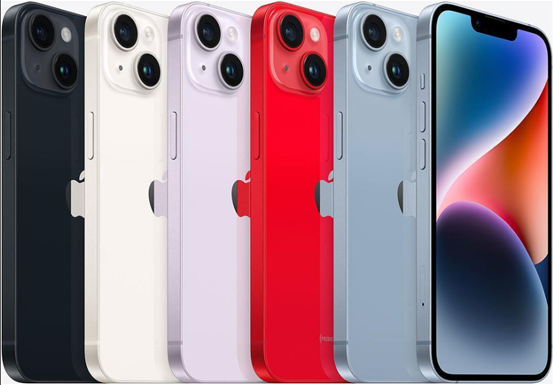In the highly competitive landscape of the smartphone industry, setting the right wholesale prices for iPhones can make or break your business. As a wholesaler, your pricing strategy must balance profitability with market competitiveness, ensuring that your prices attract retailers while also covering costs and yielding a healthy margin. Here are some key tips to help you set competitive wholesale prices for iPhones in the USA.
Understand Market Dynamics and Trends
Staying abreast of the latest market trends and consumer demand is crucial. The iPhone market is influenced by various factors, including new model releases, technological advancements, and seasonal sales patterns. For instance, the demand for the latest iPhone models typically spikes immediately after their release and during holiday seasons.
Monitoring these trends can help you anticipate demand and set prices accordingly. Tools like Google Trends, industry reports, and competitor analysis can provide valuable insights into the market landscape. Additionally, keeping an eye on Apple’s official announcements and product launch cycles will help you adjust your inventory and pricing strategies proactively.

wholesale prices
Analyze Competitor Pricing
Competitor analysis is essential in setting competitive wholesale prices. Research what other wholesalers are charging for similar iPhone models. This doesn’t mean you should always match or undercut their prices, but understanding the pricing spectrum can help you position your offerings more effectively.
Consider the added value you can provide, such as superior customer service, warranty options, or flexible payment terms. These factors can justify a slightly higher price point if they enhance the overall value proposition for your clients.
Calculate Your Costs Accurately
Accurate cost calculation is fundamental to ensuring profitability. This includes the direct costs of purchasing the iPhones, as well as indirect costs such as shipping, storage, marketing, and operational expenses. Don’t forget to factor in taxes, insurance, and potential currency exchange fluctuations if you’re sourcing products internationally.
Once you have a clear understanding of your total costs, you can set a baseline price that ensures you cover these expenses while leaving room for profit. A common approach is to use cost-plus pricing, where you add a predetermined profit margin to your total costs.
Segment Your Market
Not all retailers have the same pricing expectations or purchasing power. Segment your market based on different criteria, such as purchase volume, payment terms, and retailer size. Large retailers may expect bulk discounts, whereas smaller retailers might be willing to pay a premium for smaller, more frequent shipments.
By offering tiered pricing or volume discounts, you can cater to different segments effectively. This strategy can also incentivize larger orders, helping you achieve economies of scale and reduce per-unit costs.
Leverage Technology and Data Analytics
Technology can be a game-changer in optimizing your pricing strategy. Utilize data analytics tools to track sales performance, monitor inventory levels, and analyze customer purchasing patterns. These insights can help you adjust prices dynamically based on real-time demand and supply conditions.
For example, if data shows a high demand for a particular iPhone model, you might decide to maintain or slightly increase the price to maximize profits. Conversely, if certain models are moving slowly, strategic discounts or bundled offers can help clear inventory.
Build Strong Relationships with Suppliers
Your relationship with suppliers can significantly impact your pricing strategy. Building strong, long-term partnerships with suppliers can lead to better purchase terms, including volume discounts, flexible payment options, and early access to new models. These advantages can help you reduce costs and improve your pricing flexibility.
Negotiate with your suppliers to secure the best possible terms. Demonstrating loyalty and consistent order volumes can strengthen your bargaining position and result in more favorable conditions.
Consider Promotional Strategies
Promotions and discounts can be effective tools to boost sales and attract new customers. However, they should be used strategically to avoid eroding your profit margins. Consider limited-time offers, seasonal sales, or bundling deals where customers get a discount for purchasing multiple units.
Ensure that any promotional pricing aligns with your overall profitability goals. Monitor the impact of these promotions closely and be ready to adjust your strategy if necessary.

wholesale prices for iPhones
Maintain Transparency and Communication
Transparency and effective communication with your retailers can foster trust and loyalty. Clearly explain your pricing structure and any factors that might lead to price changes, such as fluctuations in supply costs or currency exchange rates. Providing detailed invoices and being open about your costs can help retailers understand and appreciate your pricing decisions.
Regular communication can also help you gather feedback from your clients, allowing you to refine your pricing strategy based on their needs and expectations.
Conclusion
Setting competitive wholesale prices for iPhones in the USA requires a strategic approach that considers market trends, competitor pricing, cost structures, and customer segmentation. By leveraging data analytics, fostering strong supplier relationships, and maintaining transparent communication with your retailers, you can create a pricing strategy that maximizes profitability while staying competitive in the market. Remember, the key is to strike a balance between attracting customers with competitive prices and ensuring your business remains profitable.